Read time: 6 minutes

Part of a month-long series on what makes a home in both the literal and abstract sense.
I’m committed to having a green lifestyle, and my home is the literal foundation of that. When I built my house some 30 years ago, I had two goals: to make it as energy-efficient as possible and to save the trees. Three decades and one top-to-bottom renovation later, it’s time to do some updating. Though saving energy and our oaks and dogwoods are still priorities, my understanding of what it means to live “green” has evolved—which means the job ahead of me is both more complex…and more fun.
I had two goals: to make the house as energy-efficient as possible and to save the trees.
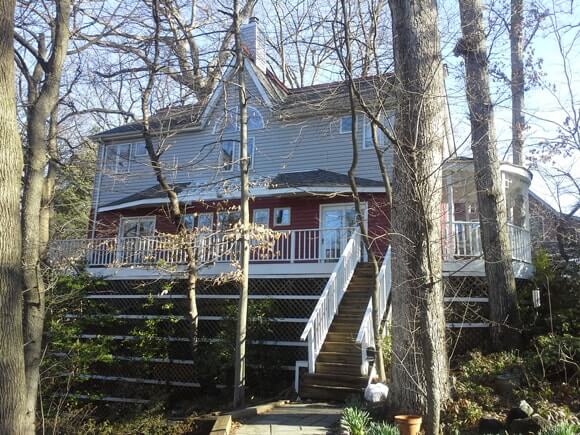
The exterior of Diane’s super “green” house
Our property location was ideal, just one block from a soon-to-open subway station to Washington, D.C. Taking mass transit to DC for work was a major part of our energy goal, and we did it! In 30 years of working a stone’s throw from the White House or going to meetings in D.C., I could almost count on two hands the number of times I had to sit in traffic burning gas to get to my destination.
As for the trees, the property was blessed with five huge oaks, each probably over 120 years old, as well as the aforementioned dogwoods and all manner of smaller trees, bushes, and random native plants. Though we could have chopped down the tallest trees to put solar panels on the roof, that seemed too much like “cutting off our nose to spite our face” once we realized what a good job nature’s biggest plants would do shading our home in the hot summer, purifying the air, and providing a habitat for all manner of birds.
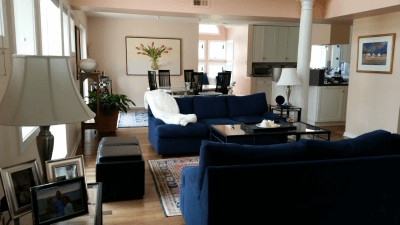
The gorgeous interior of Diane’s eco-friendly home
With that appreciation in place, we designed a smaller house than we probably could have used just so it would fit within the placement of the trees. To protect the tree roots, we hand-dug holes for telephone poles we sunk into the ground, then built an aerial platform for the house to sit on. Treehouse, anyone?
We opted to exceed the building codes for energy insulation, installing double-paned windows (the most efficient available at the time), and purchasing the most efficient lights and appliances available. When all was said and done, our local utility company said we were using 70 percent less energy than homes in the area of comparable size.
When all was said and done, our local utility company said we were using 70 percent less energy than homes in the area of comparable size.
Time for a Change
In the three decades since, we’ve renovated the house once, replacing the bathrooms, kitchen, and floors, reupholstering all the furniture instead of buying new, and upgrading the HVAC system. The house is an abode, not a museum, so it is lived in, partied in, and sheltered in. All of which means, it needs updating again. Dingy walls are crying out to be painted top to bottom. Cupboards are worn, and so are the couches. Plus there are a slew of new appliances and gadgets to help us save even more energy than we have to date. So here’s the plan—I hope our research will help your home go more eco, too.
Energy: Banishing the Burn
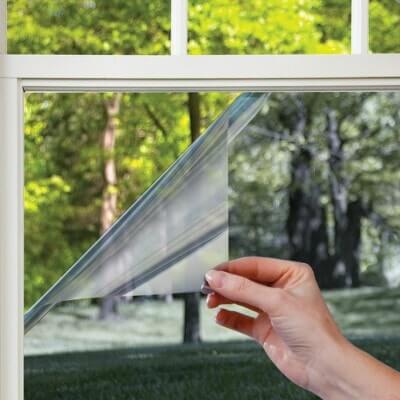
These Gila Heat Control Platinum Adhesives are energy efficient AND help protect the interior of your house from sun damage.
We’re still focused on saving energy—more than ever, in fact. Climate change due to burning fossil fuels was just a vague conversation among scientists in 1985. Today, it’s on almost everyone’s lips as we recognize we each have to do our part. I’m starting with windows, since we have 53 of them, and heat gain and loss through windows accounts for 25 percent to 30 percent of residential heating and cooling energy use. I’m toying with the idea of replacing those that have become somewhat foggy because the seals around those double panes have started to leak. If I do, I’ll be looking at low-e options. “Low e” windows are coated with a clear glaze that reflects heat back to its source, keeping the home cooler in summer and warmer in winter. If I don’t, I’ll put in some new insulated drapery and increase weather-stripping around the windows to prevent air from leaking in and out.
A free energy audit my community offered last year showed me where I needed to add insulation in the attic, walls, and crawl spaces to reduce the amount of energy needed to heat and cool my home. I’ve already tackled the attic; I’m tempted to spring for the crawl spaces before next winter hits. If you do the same, check to see if your improvements qualify for either federal or state tax credits, which could help cover as much as 10 percent the cost.
The Nest will actually ‘learn’ our habits so it will ‘know’ what temperatures we find comfortable and what time we go to bed, get up, and leave the house
What’s Your Temperature?
Our current programmable thermostat allows us to automate turning the furnace or AC on and off depending on when we’re home, which probably reduces our energy needs 10 percent per year. But it’s also out-of-date. I’m going to upgrade to a smart thermostat like a Nest. The Nest will actually “learn” our habits the way smart devices do these days, so it will “know” what temperatures we find comfortable and what time we go to bed, get up, and leave the house. It will also make it easy for us to regulate our HVAC when we’re away.
Bright Ideas
Lighting eats up almost 10 percent of the energy we use, but that can be slashed by installing energy-efficient bulbs. When we built the house, we put compact fluorescents everywhere. Though they cost a whopping $25 each at the time, they were worth it, since they use 70 percent less energy than old-fashioned incandescents. Today, though, the bulb of choice has to be LEDs. Their quality is superior to CFLS, they use even less energy, and—the feature I like the most—they last much longer. A typical ENERGY STAR-certified LED can save nearly $55 in electricity costs over its lifetime, which is 13 years with typical use.
Kitchen Magic
The best deal I’ve gotten on the appliances I’ve replaced over the years was the $200 I got back from Pepco, my utility company, when I tossed my old fridge for an energy-efficient model. Pepco even picked up the old thing and recycled it for me. Like LEDs, any new appliances I shop for will be ENERGY STAR certified, which means they’ll meet the highest standards for energy efficiency as well as performance.
Another way to go green: When we renovated our kitchen 10 years ago, we splurged on solid maplewood cabinets, which are in a sorry state today. I could spend $10,000 to replace all the cupboard fronts with new ones. But for $2,500, I’ll have the fronts removed, sanded, repainted, and reinstalled.
Be a Water Miser
We’ve replaced the toilets twice in the last 30 years, always saving water with the swap. My current “Watersense” model use a meager 1.28 gallons per flush compared to older toilets that need six, each saving a stunning 4,000 gallons of water every year. We’ve replaced all our showerheads with the high-efficiency Evolve model, which reduces the amount of water we use by slowing the flow to a trickle until we’re actually ready to get in. For the current reno, I’m trying to figure out how to rejigger my plumbing so the “grey” water from the kitchen sink and shower can easily be used to water the garden. In the meantime, I’m attaching rain barrels to some of my home’s downspouts. What they collect will be used for watering rather than H20 from the hose.
My house doesn’t look like something out of Architectural Digest, but it’s a happy place for me—one that reflects my green values, inside and out.
Color Me Eco-Friendly
I love color, but I hate stinky paint. Fortunately, I don’t have to compromise because I can get any indoor paint I want without VOCs, the “volatile organic compounds” that give paint their nasty smell. Worse, VOCs emit toxic chemicals (like formaldehyde) linked to respiratory and nervous-system disorders and contribute to the fact that indoor air can be ten times more polluted than what’s outdoors. Here’s a quick guide to some no-VOC options.
What’s Underfoot
Our current floors are FSC (Forest Stewardship Council)-certified cherry wood that is sustainably grown and harvested and sealed with a water-based sealant to minimize fumes. All of this was purchased from Amicus Green, an eco-design and building center. Only my stairs and master bedroom are carpeted, with fabric made from recycled plastic soda bottles. The gorgeous oriental rugs in the living room are “vintage,” several of them being at least 60 years old!
My house doesn’t look like something out of Architectural Digest, but it’s a happy place for me—one that reflects my green values, inside and out.
Also in Our Home Series:
Selling Your Childhood Home: Does a House Make a Family?
Midlife Moves: Where to Go When The Nest Is Empty
My Epic Quest to Finally Create a “Grown Up” Home
Love and Chairish: Meet The Unintentional Home Entrepreneur
Further Reading:
Hand Made: The Modern Woman’s Guide to Made-from-Scratch Living
Green Enough: Eat Better, Live Cleaner, Be Happier (All Without Driving Your Family Crazy!)
Zero Waste Home: The Ultimate Guide to Simplifying Your Life by Reducing Your Waste

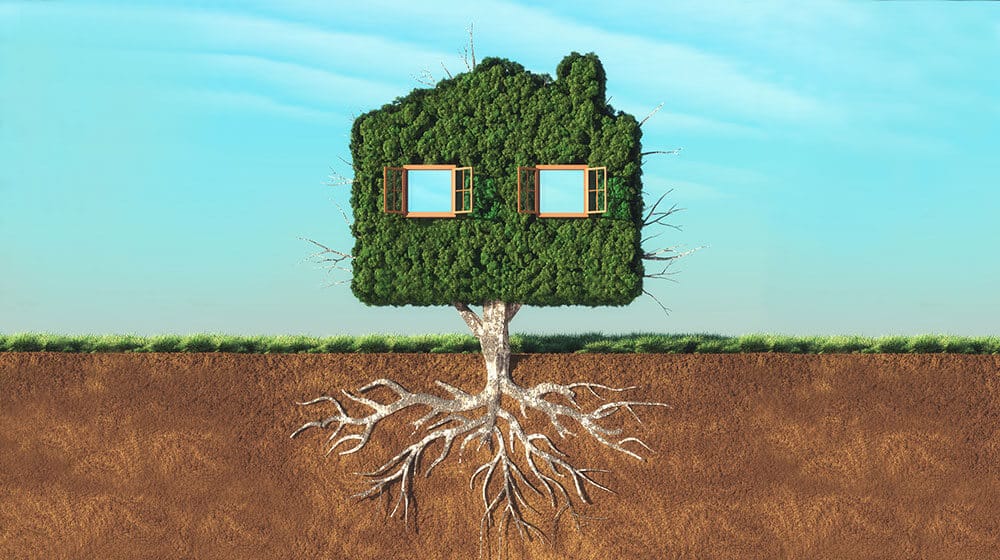
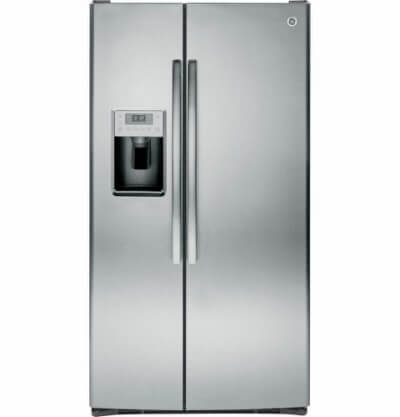
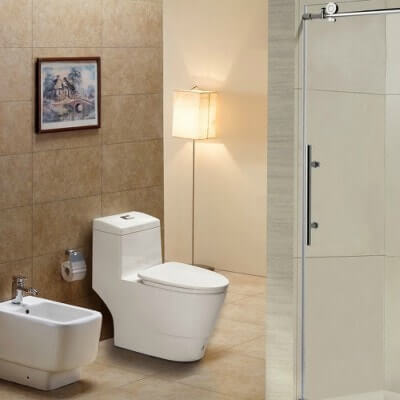


















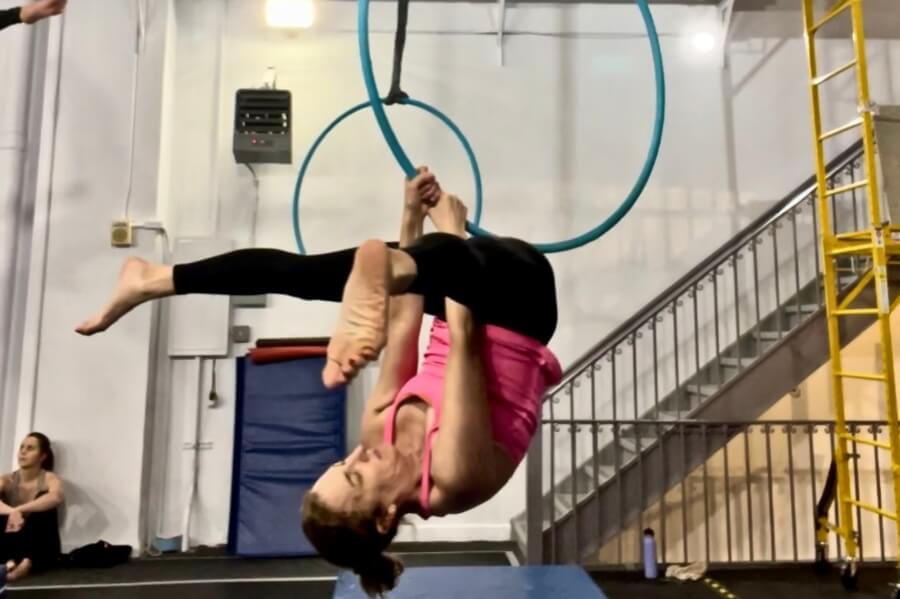
0 Comments